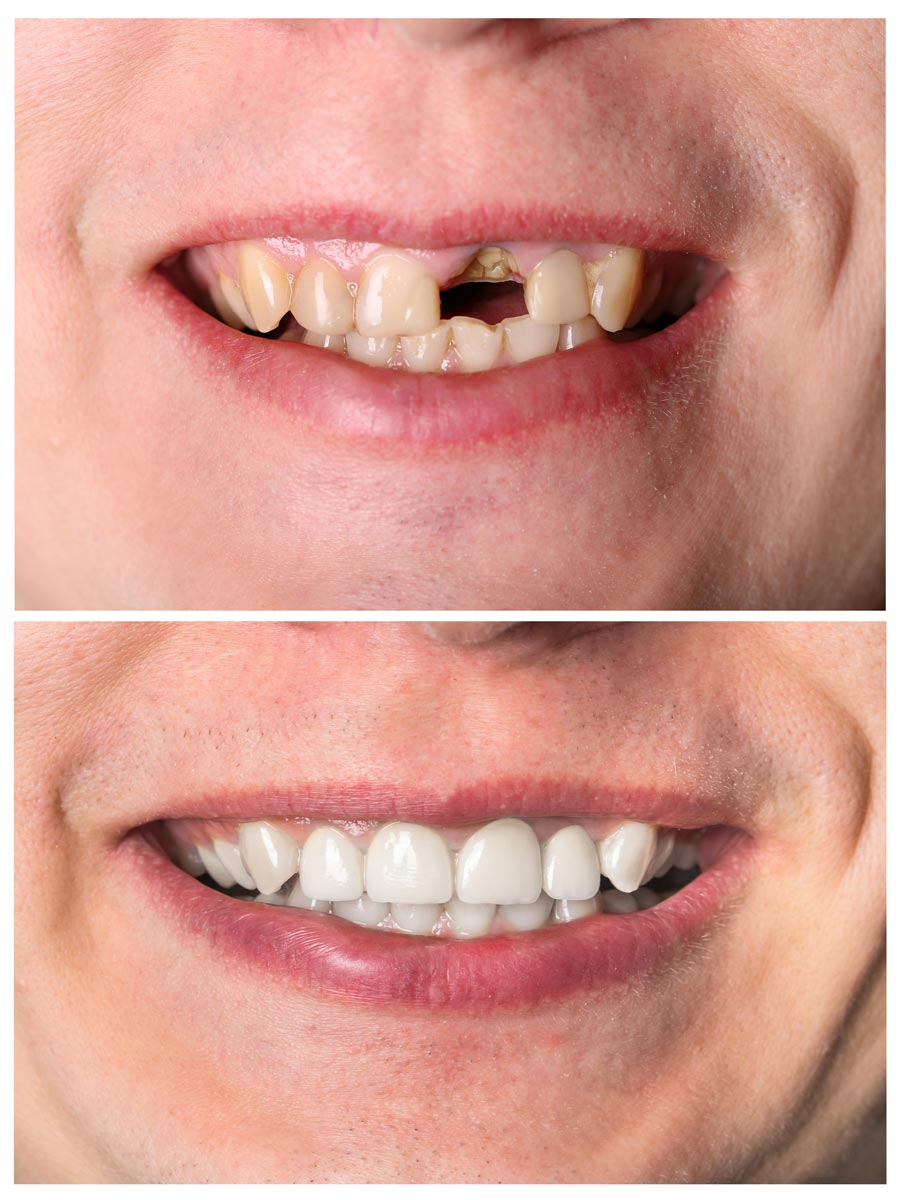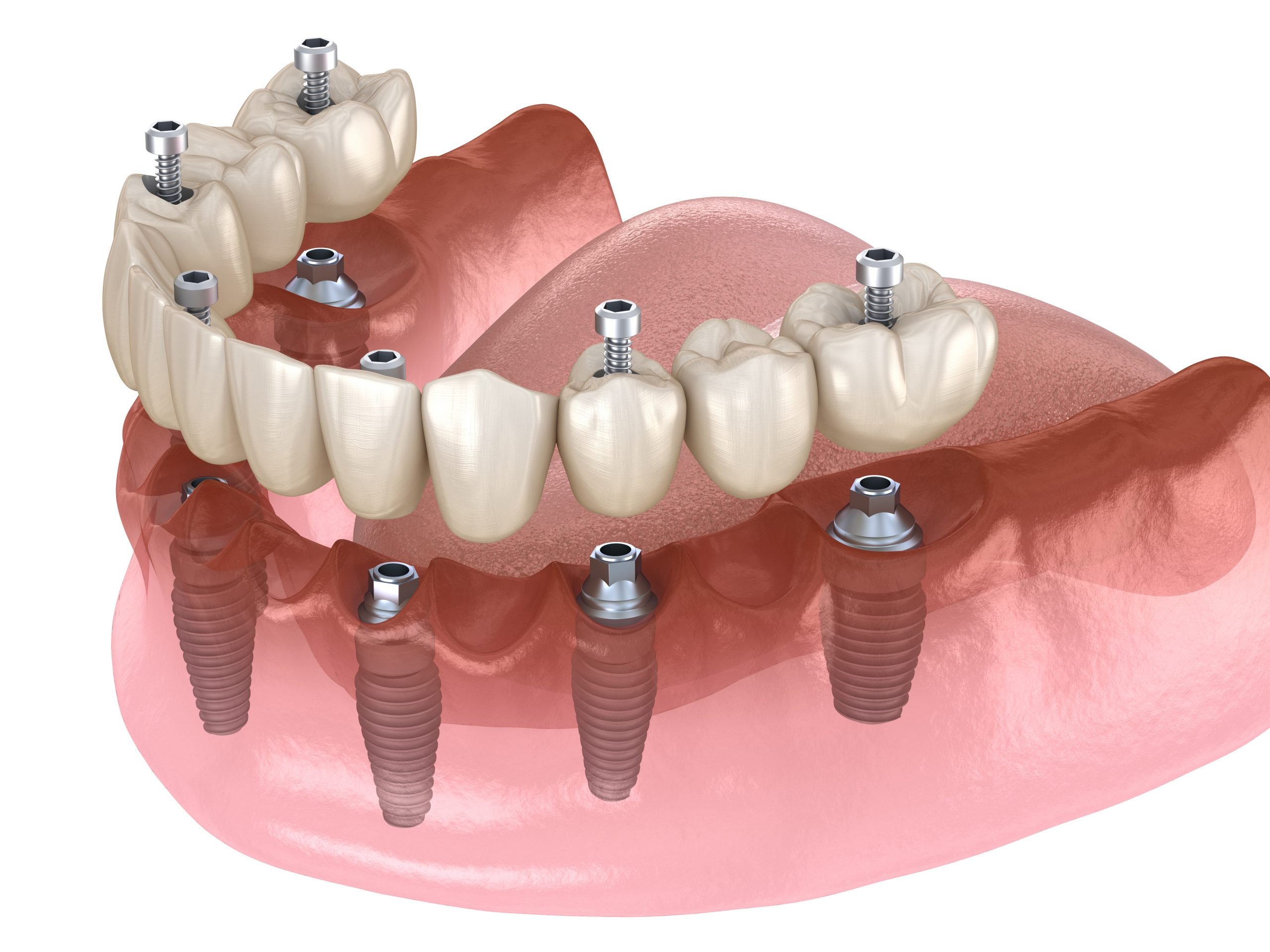Everything You Need To Know About Dental Implants
The need for replacement teeth is more common than you may think. People lose their natural teeth for many reasons including tooth decay, injury, infection, and more. It is very normal for patients to feel insecure about their smiles when they lose a tooth or need a tooth removed but luckily there are many solutions.
While there are many options for replacement, dental implants are one of the most effective ways to replace a missing tooth to restore a smile. The biggest benefit of this procedure is that the implant will look no different than the other natural teeth and will support a patient’s oral health for years to come. Keep reading to learn about the different types of dental implants and dental implant materials to discover which type of implant is best for your needs.
The Ideal Candidate For Dental Implants
For people who have lost teeth due to injury or periodontal diseases, dental implant procedures are a good alternative. The right candidate must:
• have good general oral health
• have an adequate bone density in the jaw to anchor the implant
• be free from periodontal disease
• have healthy gum tissue

What Are The Different Types of Dental Implants?
There are two main types of dental implants and two main types of procedure, endosteal and subperiosteal, and single-stage and two-stage, respectively. All of the options are incredibly natural-looking but are used for different reasons. Your dentist will be able to guide you in making the right implant decision for your oral needs, but it is important to know the difference.
Endosteal: An endosteal implant is the more common of the two types of implants and what most dentists prefer to use. This type of implant is anchored into the jawbone to act as an actual tooth root and is shaped like a small screw. Dentists prefer to use this method because when a tooth is missing in the mouth structure it can cause bone loss and shift adjacent teeth. Endosteal implants anchored into the vacant tooth root helps preserve the structure of the face and jawbone.
Subperiosteal: Subperiosteal implants look the same as endosteal implants but are placed under the gum tissue or on top of the jawbone instead of being anchored into the jawbone. This implant option is typically used on patients who do not have a strong enough, or healthy enough, jawbone to support an implant.
Oftentimes, dentists will suggest their patients undergo a bone augmentation to rebuild and strengthen their jawbone so that they can receive an endosteal. If a patient does not want a bone augmentation however, they can achieve very similar results with a subperiosteal implant.
Single Stage: A single-stage dental implant requires only one surgical appointment. During the procedure, your dentist will place a longer implant into the jaw and gum so that the top of the implant is exposed. Once the area heals, the connector and crown parts of the implant will be attached right onto the exposed part of the implant.
The single-stage procedure is often used on patients with bone problems or those who have special needs. This is because the single-stage process is typically quicker once the initial surgery is done and the patient will have an easier adjustment to their new teeth.
Two-Stage: The two-stage dental implant procedure takes much longer than a single-stage because it requires a minimum of two surgeries with healing time in between. During the first part of this process, your dentist will surgically place the base of the dental implant into the jawbone and then stitch it up to heal. Once the mouth has healed after a few months, another minor surgery will expose the base of the implant to attach the connector piece and crown of the implant.
Although this type of process is more invasive and complex, it provides long term benefits. During the time between the first and second surgery, the base of the implant will fuse to the jawbone to create a base that is as strong as a real tooth root.
Potential Issues During Dental Implant Procedures
The success rate of implants is quite impressive. However, sometimes patients get complications, most of which are minor and are easily managed by dentists. Some of the issues people experience include:
• Implants become loose during the healing process. When this happens, the dentist may remove the implant to allow the bone to fill the area and replace it after the bone regains strength.
• Perimplantitis. This is a disease that causes the loss of the bone supporting the implant. In such an event, the dentist removes the implant and may recommend grafting.
• Implants can fracture or wear out. In such cases, the dentist examines the magnitude of the problem and recommends an appropriate alternative.
• Nerve and tissue damage may occur if the implant is placed very close to a nerve, causing chronic pain and numbness in the mouth area.
• Foreign body rejection. The patient’s body may reject the implant altogether.
• Allergic reactions. Some patients may be allergic to substances in the implant. Therefore, it is prudent to have a MELISA test before the procedure.

Steps in the Dental Implant Procedure
Initial evaluation. This is done by the surgeon to determine the condition of the jawbone. It may include x-rays and taking impressions.
Tooth extraction. This involves the removal of any remaining tooth before starting the procedure. It can be done simultaneously during the process.
Grafting of the socket. Grafting is done at the extraction site to preserve the bone.
Insertion of the implant. The patient is put on anaesthesia, after which the implant is placed in the jawbone.
Abutment placement. An abutment is a piece that connects the implant to the crown, usually placed on top of the implant.
Fixing of the permanent crown. After the gums heal, the dentist prepares an artificial tooth or crown and attaches it directly to the implant.
What to Expect as a Patient
During the surgery, the anaesthesia used by the dentist may make you feel groggy for some time. Incisions made in your gums to place the implant in the jaw may cause bruises, swelling, minor bleeding, and pain. The dentist may prescribe medication.
After the procedure, the gums are closed to cover the implant. You will be scheduled for a second phase of the procedure after a few months. After healing of the gums, an artificial tooth will be placed on the implant.
If you live in Ottawa and think dental implants might be right for you, contact Heron Park Dental to set up a consultation today.




Thanks for the reminder that it’s important to also look into the kind how the tooth extraction will be done before getting dental implants. I’m interested in looking for a dentist to consult about that because one of my molars is starting to decay. I think that preemptively replacing it with a dental implant would be a good idea.